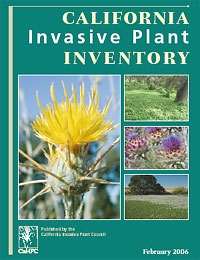By Susanne von Rosenberg, UC Master Gardener of Napa County
Plants are a terrific way to create a privacy screen for your garden, or to create a shady space in summer. For privacy screens, it's typically best to select plants that are evergreen.
The first consideration, as always when selecting plants, is the planting site. What type of soil do you have, and how much sun does the area get? Next, figure out how high you want your privacy screen to be. Do you just need to create a screen between your neighbor's patio and your own? Or do your neighbors look down into your yard from their second (or third) story?
Also consider, especially for taller privacy screens, where the plants will cast shade. If you need a privacy screen on the south side of your property, it may cast shade for much of the year.
Make sure the plant you're considering is not on an invasive-species or noxious-weed list for your area. The California Invasive Plant Council maintains a list of plants that are considered invasive in the state. In general, if a non-native plant reseeds readily and is drought tolerant, it has a good chance of being invasive here.
How fire resistant is the plant you're considering? Are the roots likely to be invasive? Will they affect your neighbor's property or damage sidewalks?
How much maintenance are you willing to do? While fast-growing plants are appealing when you're eager to create privacy, they will also likely take more maintenance.
If you have animals, you'll want to avoid plants that are toxic to them.
If you choose wisely, your privacy screen can provide other benefits, such as fragrant flowers, edible fruit or wildlife habitat. When evaluating potential candidates, make sure you understand their maximum height and width. I was considering fern pine (Afrocarpus gracilior) for a privacy screen at my property (it grows 2 to3 feet per year) until I learned that it can reach 35 feet in height. I need a privacy screen that is 20 to 25 feet tall and do not want it any taller because it would shade too much of my yard. Fern pine is commonly grown as a tall hedge and maintaining it at 6 to 8 feet is certainly feasible. But pruning it to keep it at 20 or 25 feet is not a task I want to take on.
For a low screen of 6 to 8 feet, you have the most choices. You can plant evergreen vines along a trellis, a variety of shrubs, or small trees that you can prune into a shrub or hedge. Traditional options include boxwood and privet hedges, and camellias for a less formal hedge in shady or partially shady areas. Other options include Meyer lemons (they are relatively frost tolerant and have dense foliage); lilac vine (Hardenbergia violacea), a vine with sprays of small, dark purple flowers); and trumpet vine (Distictis sp., either the red-flowered variety or D. buccinatoria, which is hardier). Or consider a native plant such as California lilac (Ceanothus), which comes in a range of blue colors and heights.
If you are installing a trellis or fence near a property line to support your plantings, make sure you know the local zoning and permitting codes. Typically there are limits on fence height.
Taller privacy screens can be more challenging. Typically you will be considering trees with a dense canopy or growth habit. If you select a tree with a relatively wide canopy or spreading growth habit, you will need fewer of them for your hedge. Good options include cypress, arborvitae, redwoods, evergreen magnolias (not all are evergreen), loquats, full-size (not dwarf or semi-dwarf) citrus trees (but consider frost hardiness), and English laurel (Prunus laurocerasus).
English laurel (also known as cherry laurel) is in the same plant family as peaches and nectarines; it is not a true laurel. It received its common name because its leaves resemble laurel leaves.
Again, make sure that your selection suits the site. Magnolia trees range in height from 10 feet to more than 50 feet at maturity. Many a gardener has planted redwoods only to be overwhelmed by their size 10 or 20 years later.
Most people who are interested in creating a privacy screen have heard that bamboo is fast growing. Bamboo is no longer recommended within 30 feet of structures because it is considered fire prone. Nor should it be planted along roads and driveways because it can present a fire hazard to emergency responders. In addition, bamboo can easily get out of control and it requires a fair amount of water.
Choose wisely, and you will have a privacy screen to enjoy for years.
Workshop: “Sustainable Vegetable Growing” (Four-Part Series) on Sundays February 23, March 1, March 8 and March 15, from 2 p.m. to 4 p.m., at the University of California Cooperative Extension, 1710 Soscol Avenue, Napa. For more details & online registration go to Online registration (credit card only) or call 707-253-4221.
Workshop: “Step-by-Step Garden Design” on Saturday, February 29, from 9:30 a.m. to 11:30 a.m., at the University of California Cooperative Extension, 1710 Soscol Avenue, Napa. For more details & online registration go to On-line registration (credit card only) or
Mail-in/Walk-in registration (cash or check only) or call 707-253-4221.
The UC Master Gardeners of Napa County are volunteers who provide UC research-based information on home gardening and answer your questions. To find out more about upcoming programs or to ask a garden question, visit the Master Gardener website (http://napamg.ucanr.edu) or call (707) 253-4221 between 9 a.m. and noon on Mondays, Wednesdays or Fridays.
Attached Images:
